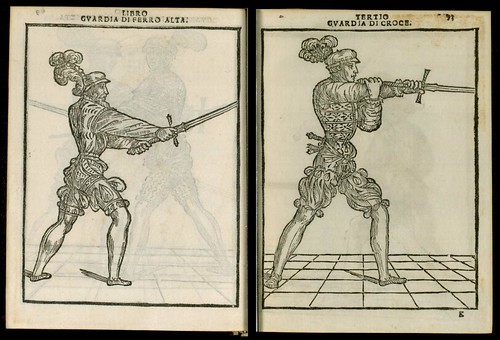
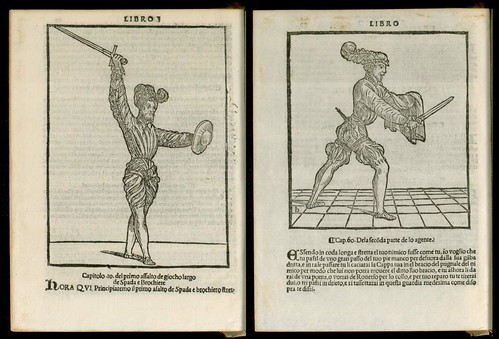

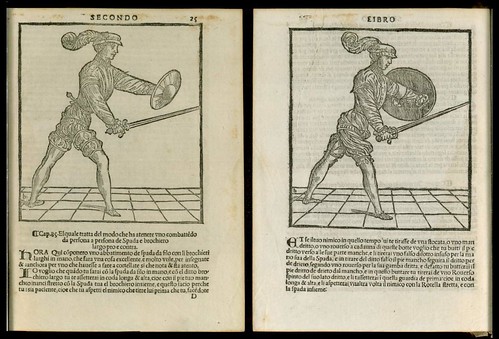

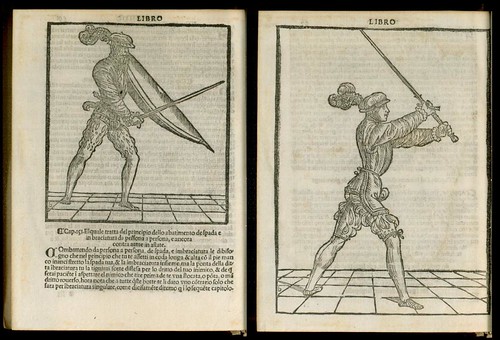
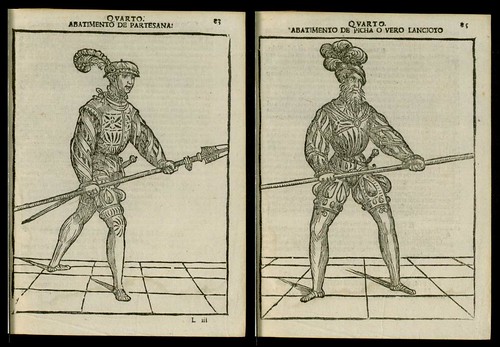
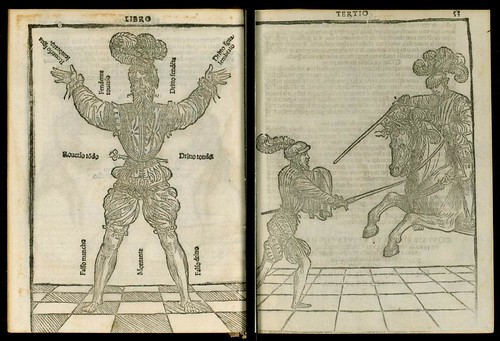
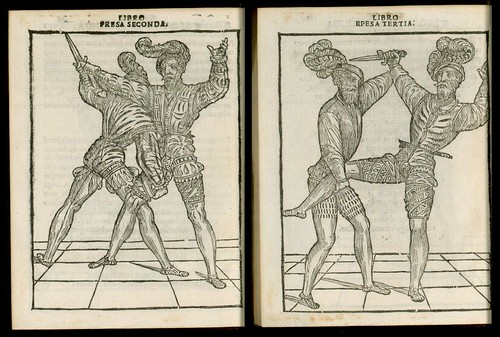
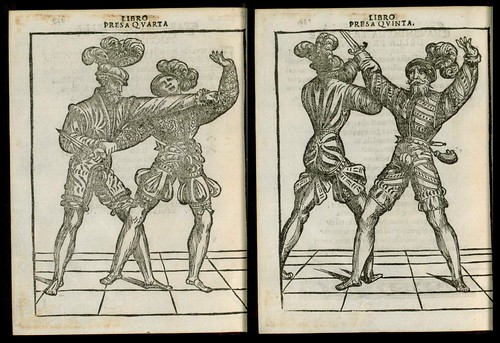



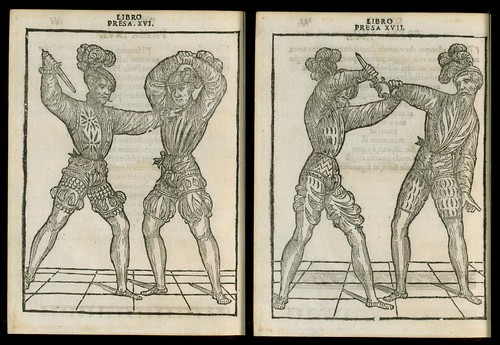


Fencing master, Achille Marozzo (1483-1553), was the most prominent and influential champion of the Dardi school of swordsmanship, which emerged in Bologna during the Renaissance.
Lippo di Bartolomeo Dardi's system of single-handed sword techniques bridged the gap between the cruder medieval cutting and slashing style and the nimble and more technically inclined¶ thrusting methods associated with the rapier. The latter system would come to dominate fencing in the 17th and 18th centuries.
¶It has been suggested in the comments below (and in another of the fencing posts on BibliOdyssey) that the differences between the sword -vs- rapier in terms of ease of manoeuvrability and range of offensive techniques that could be undertaken with each has traditionally been overstated. In other words, it's asserted that the rapier is not more agile, it was just a different, newer weapon.
Dardi (or Bardi) had established an academy early in the 15th century in Bologna and although no surviving treatise of his is thought to exist, his combat strategies were passed down through students and Marozzo published the definitive record of the school's principles in his 1536 book, 'Opera Nova dell'Arte delle Armi' (~new work on the art of arms).
Marozzo's 'Opera Nova' was the most important fencing manual of the 16th century and the first serious work to establish uniform rules for the use of weapons. It outlines theoretical considerations (derived from Aristotle, no less) and provides practical direction for both defensive and offensive use of swords, daggers and polearms in varying combinations, as well as the role of shields, bucklers and capes. There is a whole chapter devoted to honour, such were the noble aspirations of the project.
Further editions of 'Opera Nova' were published up until 1615 and the treatise continues to be used as a primary source in fencing academy instruction today. It is not the only reference publication in respect of the Bologna School, as contemporary works by Manciolino, Viggiani and Dall’Agocchie are also regarded as important ancillary commentaries.
- The complete first edition of 'Opera Nova' was put online last month by the Bayerischen Staatsbibliothek (contains eighty+ woodcut illustrations).
- Bolognese Swordsmanship: The Dardi School at Chicago Swordplay Guild.
- Bolognese Swordsmanship at the Order of the Seven Hearts.
- The Teachings of Marozzo By Giovanni Rapisardi & Edited By William E. Wilson (a translated commentary on Marozzo's 'Opera Nova' and related contemporary works).
- From Dueling to Fencing at Fencing Online (a history of the sword arts).
- Previously: Academy of the Sword and The Art of Fencing; and more generally: combat.
- I didn't note any current listings for 'Opera Nova', but there are: 'The Martial Arts of Renaissance Europe' by Sydney Anglo and 'Renaissance Swordsmanship' by John Clements.




No comments:
Post a Comment